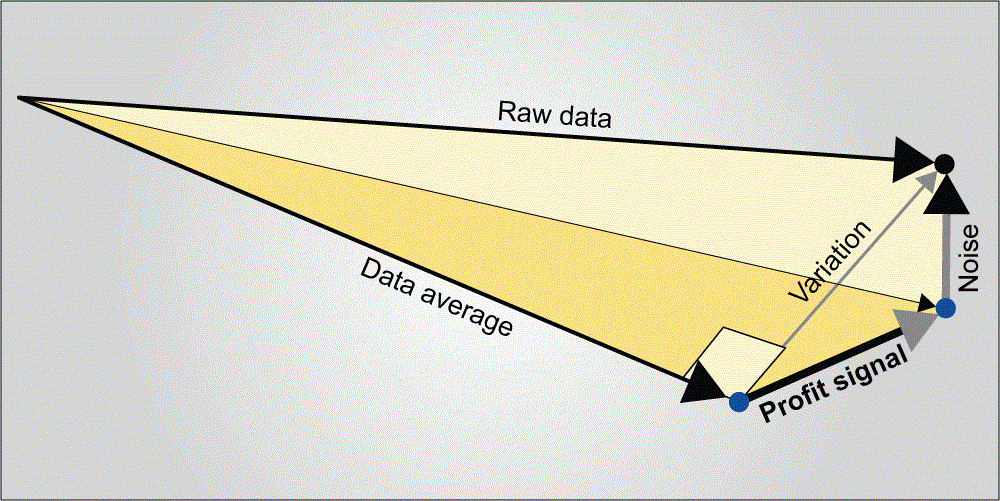Category: Sampling/Data

Improving Staff Scheduling at Providence Health System
Published:As with most hospitals, labor is the largest budget expense at the Providence Alaska Medical Center (PAMC) in Anchorage. But benchmarking indicated that staff utilization at PAMC, a part of the Providence Health System, was above the 75th percentile of the national average. To remedy this, in October 2003, a multidisciplinary team (nursing, leadership, finance […]
Read more »
Basic Sampling Strategies: Sample vs. Population Data
Published:Information is not readily found at a bargain price. Gathering it is costly in terms of salaries, expenses and time. Taking samples of information can help ease these costs because it is often impractical to collect all the data. Sound conclusions can often be drawn from a relatively small amount of data; therefore, sampling is […]
Read more »
Sample Correctly to Measure True Improvement Levels
Published:Many companies spend considerable amounts of money on customer surveys every year. They then use those survey results to amend strategies, design new products and services, focus improvement activities and to celebrate success. But can practitioners always rely on the results they see? Here is a fictional example: MyInsurance, a life insurance company with worldwide […]
Read more »
Attribute Data: Making the Most of What’s Available
Published:Many times in software development and information technology, attribute data is what is available. Thus, it is valuable to look closely at the nature of attribute data and explore some tips for making the most of it.
Read more »
Stratification Leads to Specialized Improvements
Published:Many times Six Sigma practitioners start projects or analysis at a broad level. These projects may include processing a patient through a clinical procedure, transferring medical records, registering a patient, or analyzing lab or equipment usage. In healthcare, the number of processes and their complexity can be very high; there may be thousands of processes […]
Read more »
Six Sigma Tools Still Fit in Projects Lacking Data
Published:No data? No problem! The Lean Six Sigma process provides an excellent framework for all types of projects, even when there is little or no data.
Read more »
Analytical Treatment of Discrete Ordered Category Data
Published:Ordered category data is discrete data representing appraiser or client perception against a rating scale such as a survey or questionnaire. Black Belts learning to apply the Six Sigma methodology to ordered category data are traditionally taught analytical methods that include normal and Poisson distributions. This is probably due to Six Sigma’s beginnings in manufacturing. […]
Read more »
Implementing a Data-Driven Methodology Without Data
Published:Six Sigma is a data-driven approach for eliminating defects in any process. The use of data is a key foundation of Six Sigma. Yet, when Six Sigma is being implemented organization-wide, the use of data diminishes, almost to the point of disappearing.
Read more »
Data Management Plans Can Reduce Project Cycle Times
Published:Companion Article This is one of two articles by David Wetzel that explore the value of developing a data management plan as the intial step in the Measure phase of the Six Sigma DMAIC methodology. The other article is “Data Management Plans Can Improve Collection/Validation.” Long project cycle times, frequently cited as an impediment to […]
Read more »
Data Management Plans Can Improve Collection/Validation
Published:Companion Article This is one of two articles by David Wetzel that explore the value of developing a data management plan as the intial step in the Measure phase of the Six Sigma DMAIC methodology. The other article is “Data Management Plans Can Reduce Project Cycle Time.” Understanding data and defining process paramaters (input) or […]
Read more »
Using Lean Six Sigma Measurement Tools in Maintenance
Published:Lean Six Sigma is widely used in production, but it can just as easily be applied to maintenance. Here’s how to implement a measurement system using data to identify root causes, prioritize workloads and drive improvements in a maintenance operation.
Read more »
Help for Project Leaders: Advanced Data Door Worksheet
Published:At the Measure phase, improvement project leaders are confronted with the question: What is the most effective, efficient way to identify the data needed and to perform analysis of the data during the Measure and Analyze phases of the DMAIC method?
Read more »
Margin of Error and Confidence Levels Made Simple
Published:A survey is a valuable assessment tool in which a sample is selected and information from the sample can then be generalized to a larger population. Surveying has been likened to taste-testing soup – a few spoonfuls tell what the whole pot tastes like. The key to the validity of any survey is randomness. Just as […]
Read more »
Why You Cannot Depend Totally on Statistical Software
Published:The proliferation of do-it-yourself statistical software can give some Six Sigma practitioners, who may not be strong in statistics, a false sense of confidence. For the most accurate results, follow these eight tips before you begin collecting and analyzing data.
Read more »
Use Cases and Measures: Strengthening the Six Sigma Link
Published:“Use cases,” a term coined by Ivar Jacobson early in the evolution of object-oriented thinking, have been widely accepted as a helpful way to understand and document the functionality that is important in all kinds of software or business systems. Anyone within miles of object-oriented design will be familiar with the typical application of use […]
Read more »
3 Ways to Speed Up Data Collection in Financial Service Processes
Published:In any financial service process that is being studied for the first time, it’s common for Six Sigma teams to spend one-third to one-half of their project time on data collection alone. Here are three tips that can help you get off to a faster start.
Read more »
Using Vector Analysis for Turbo-Charged Data Mining
Published:Data mining via vector analysis is a powerful, flexible process observation tool. With due regard for the possibility of correlation/causation fallacies, data mining can be used by almost anyone.
Read more »
Estimating Sample Size for Process Capability with Special Causes (with Template)
Published:Six Sigma team members often ask, “How much data do I need to establish the baseline?” for a process that is unstable. There is no valid statistical calculation for sample size in this situation, but that is not much comfort when you are trying to develop a sampling plan in the early stages of your […]
Read more »